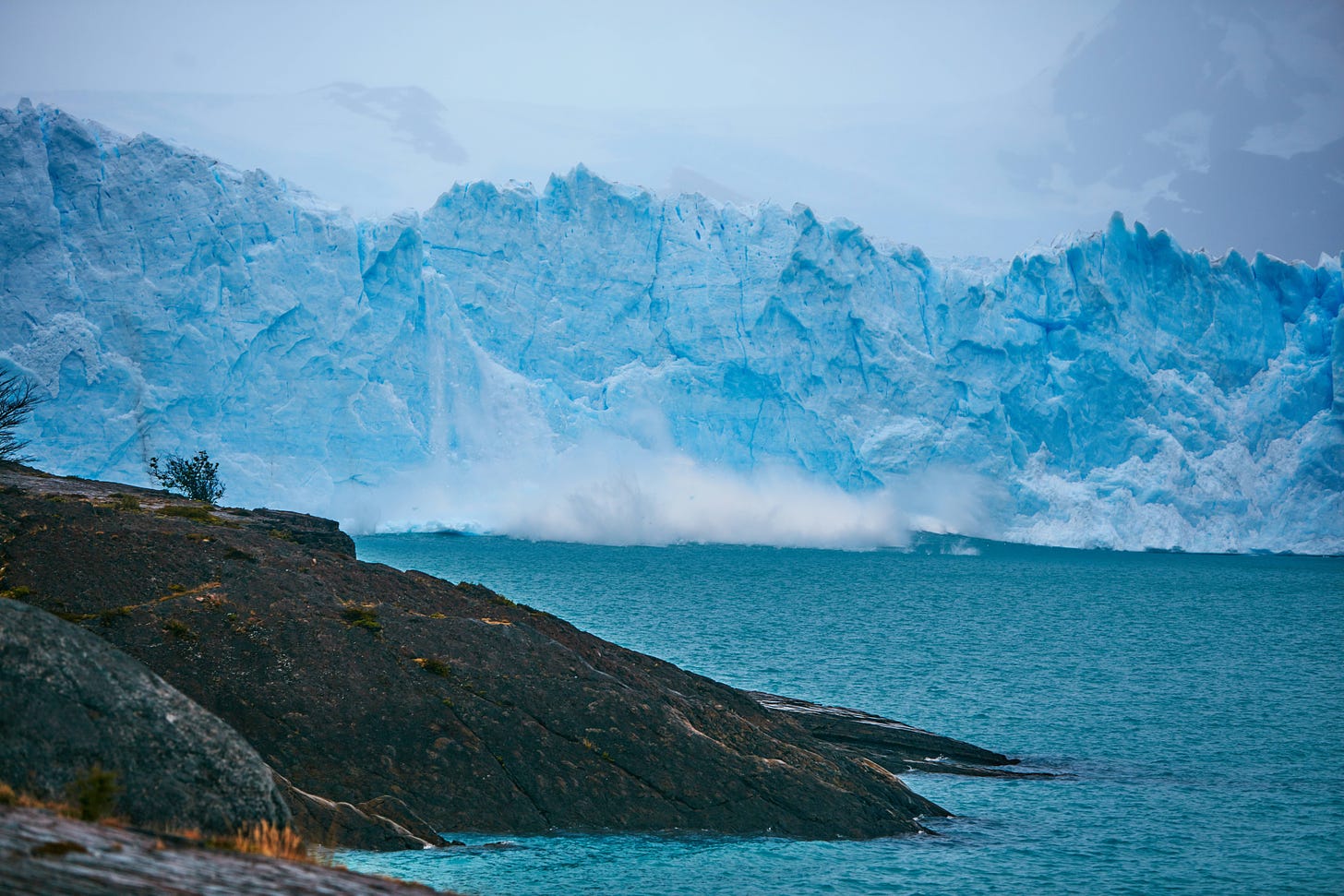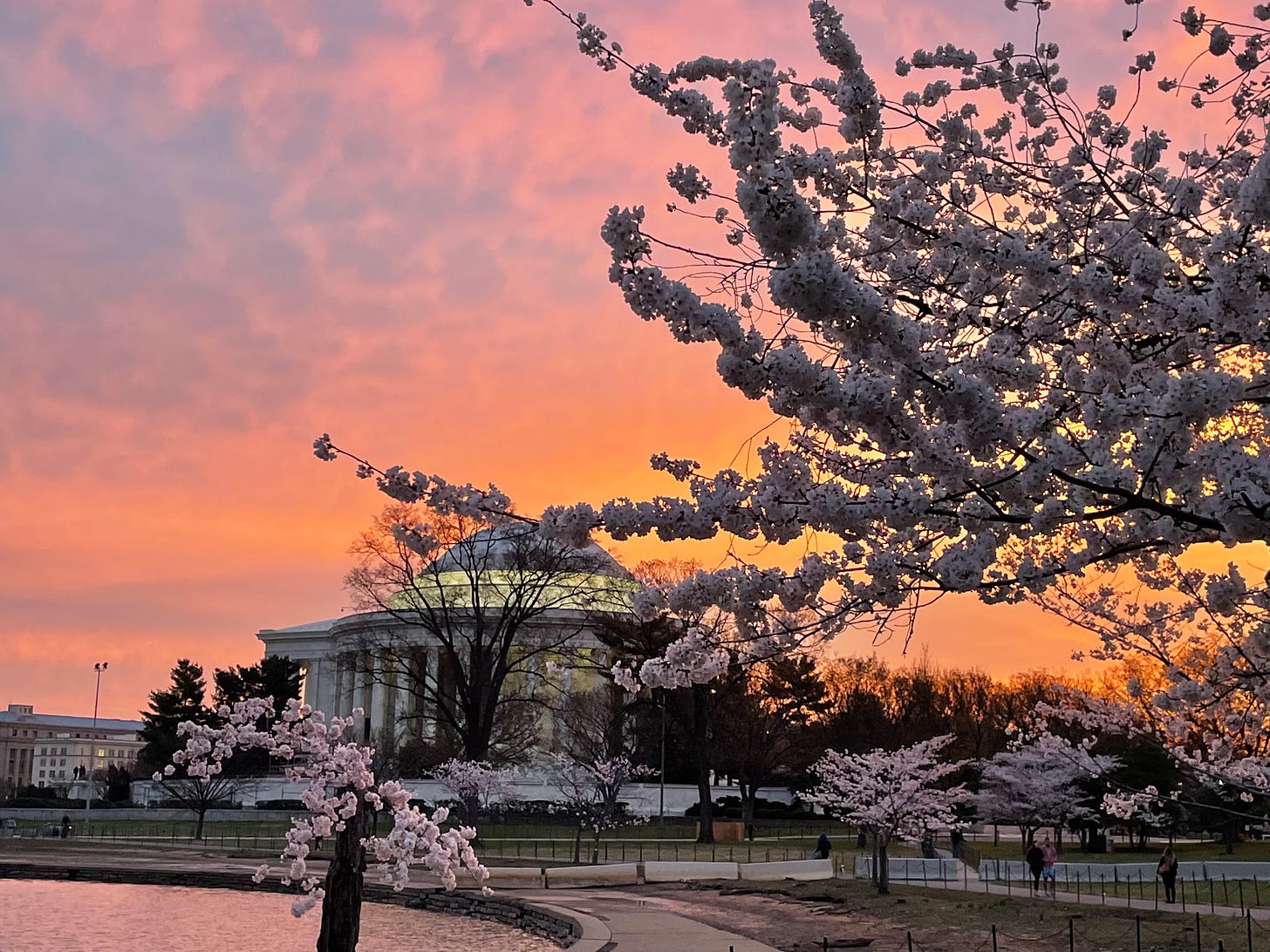Welcome to Planet Days, a five-minute roundup of the latest climate news and what it means for our Planet. If this was forwarded to you, smash that subscribe button:
Last week, Tesla opened its first factory in Europe, Build Back Better resurfaced (kind of), and for the first time, plastics were found in people’s blood.
In case you missed it, here’s what else happened around the Planet.
Sunday, March 20
Record heat on the poles
The poles are heating up. Last weekend, parts of Antarctica reached 70 degrees above normal, and some stations in the Arctic recorded temperatures 50 degrees above normal. Also last week:
Satellite data showed the Conger ice shelf, which is about the size of Rome, collapsed in Eastern Antarctica.
At the north pole, the Arctic’s winter sea ice sea ice peaked at 9.25 million square miles, marking the 10th smallest peak and third earliest peak in the satellite record.
The dramatic changes at the poles are shocking researchers, who fear these extremes are part of a new normal driven by climate change, The Guardian reports.
Monday, March 21
Companies and climate risk
Now for everyone’s favorite: policy news! On Monday, the Securities and Exchange Commission voted in favor of a proposed rule to require companies to release information about climate risk.
The rule requires companies to:
Show how climate change affects revenues and profitability.
Report annually on climate-related goals (if they have them), and how they plan to achieve those goals.
Disclose greenhouse gas emissions, including in some cases scope 3 emissions (when customers use companies’ products).
The rule essentially turns up the heat on companies, forcing them to show how they pollute and what they’re going to do about it. The rule now enters a 60-day comment period before becoming official — though, as The Atlantic warns, it could eventually be overturned by the Supreme Court. POLITICO has more.
Tuesday, March 22
Rich countries must wean off oil and gas
The Planet’s on deadline: To meet the goals of the Paris Agreement, rich countries must stop producing oil and gas in the next 12 years, new research finds.
Should that happen, the Planet would have a 50% shot at keeping global temperature rise to 1.5 degrees, the most ambitious target of the international climate pact. Poorer nations, meanwhile, have till 2050 to do so.
The data comes as the Ukraine crisis forces Western nations to cut ties with Russian oil and gas. As nations shore up energy supplies to fill the gap (more on that below), they must turn to clean energy, rather than fall back on fossil fuels. Thomson Reuters Foundation has the story.
Thursday, March 24
We’re failing on air quality
Just 3% of the world’s cities and no countries met air quality standards established by the World Health Organization in 2021, according to a new survey by IQAir.
The analysis found India, Pakistan, and Bangladesh ranked among the most polluted last year, exceeding the guidelines — which were updated in September — by at least 10 times. In the United States, average air pollution exceeded standards by two to three times.
“This report underscores the need for governments around the world to help reduce global air pollution,” Glory Dolphin Hammes, CEO of IQAir North America, told CNN. “(Fine particulate matter) kills far too many people every year and governments need to set more stringent air quality national standards and explore better foreign policies that promote better air quality.”
Friday, March 25

US and EU make a deal
With the war raging in Ukraine, Western nations are trying to cut energy ties with Russia, which provides Europe with 40% of its gas. On Friday, the United States and European Union struck a deal to do just that — though it may not be the greenest.
The deal boosts American exports of liquified natural gas to 15 billion cubic meters this year, and up to 50 billion cubic meters/year “until at least 2030.” The deal also invests in ports, pipelines, and other LNG infrastructure to make such shipments possible. But many of these investments will still take years to pull off, leaving Europe without a short-term fix.
Countries are walking a fine line between fossil fuel use and climate goals here, and not everyone’s happy with the deal (see our next story). Still, the deal vows to accelerate new clean energy projects and technologies, expand the green workforce, and advance clean and renewable hydrogen. The Washington Post has more.
Youth climate strikes are back
Thousands of young people took to the streets on Friday calling for climate action and peace, in the largest mass climate strike since 2019.
The strikes, organized by Fridays for Future, stretched across 750 cities and towns and all seven continents, beginning in Asia and Australia then moving to Europe and Africa before finishing later in the Americas.
In Europe, the action was heavily influenced by the ongoing conflict in Ukraine — with calls for European energy independence and expansion of renewables at home. Read the full story from Deutsche Welle.
Great Barrier Reef in trouble
The Great Barrier Reef has been hit with its sixth mass coral bleaching event, marking the first time mass bleaching has happened in a cooler La Niña year.
Using helicopters, the Great Barrier Reef Marine Park Authority and Australian Institute of Marine Science completed aerial surveys along the entire 2,300km length of the marine park, finding widespread bleaching in all four management areas, reports The Guardian.
But another recent study offers hope: A two-year analysis of corals in Hawaii suggests some species may survive warmer, more acidic waters. Scientific American has more.
Bonus
Cherry blossoms in bloom
It’s officially spring, and for those in Washington, D.C., that means it’s cherry blossom season. Brandon snuck out early Wednesday morning to snap this sunrise pic on the Tidal Basin, only a couple of days after the blossoms reached peak bloom.
If you’re planning to come to next year’s National Cherry Blossom Festival, you may block out March instead of April, as warming temperatures mean earlier blooms. But no matter when it happens, peak bloom is always a sight to see. The Washington Post has more photos.
See you next week,
Brandon and Sam







Thanks for this helpful round-up!